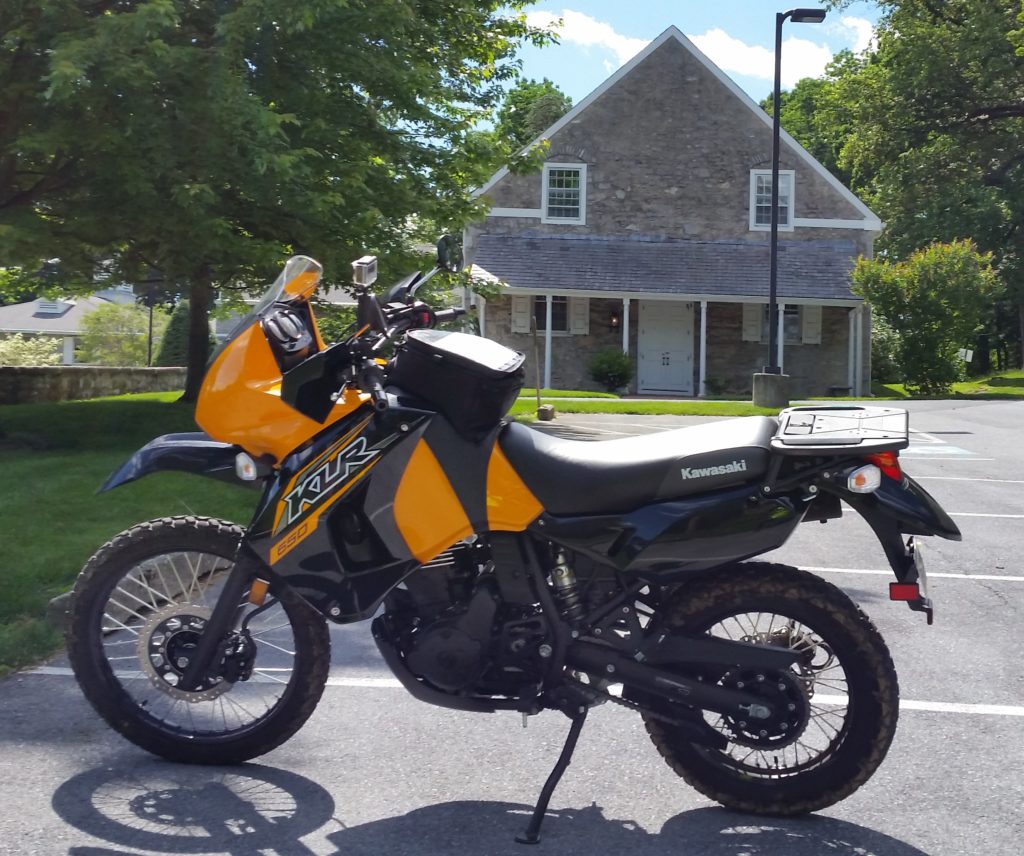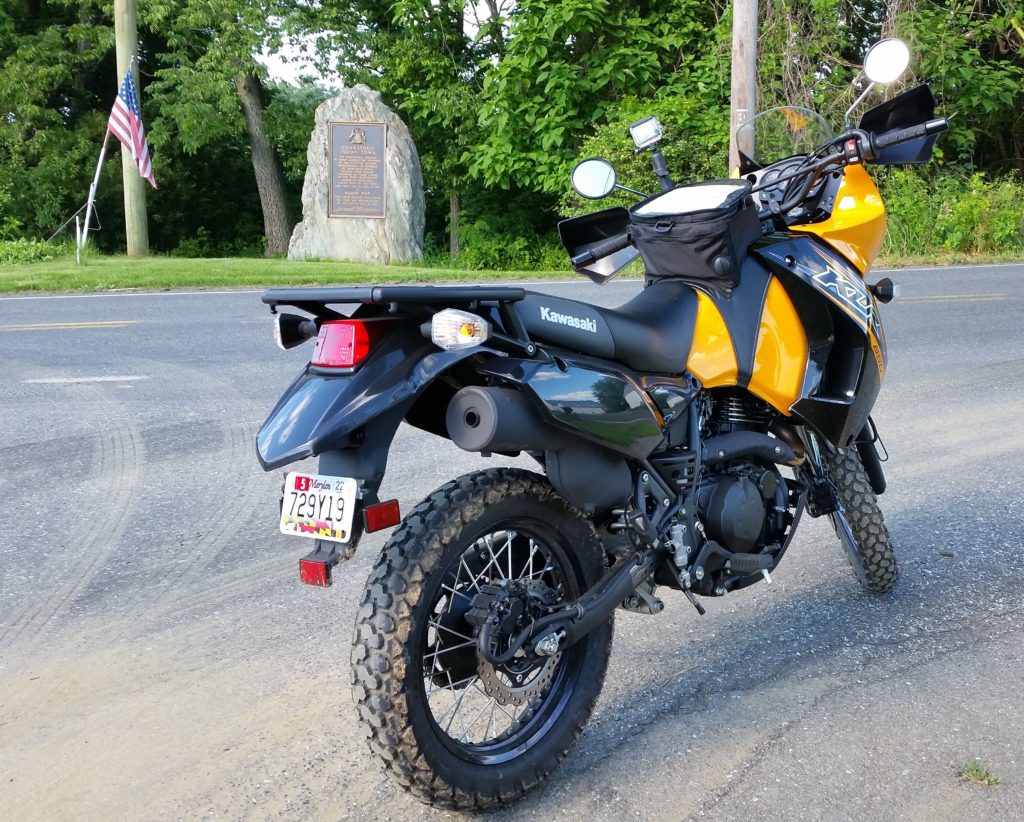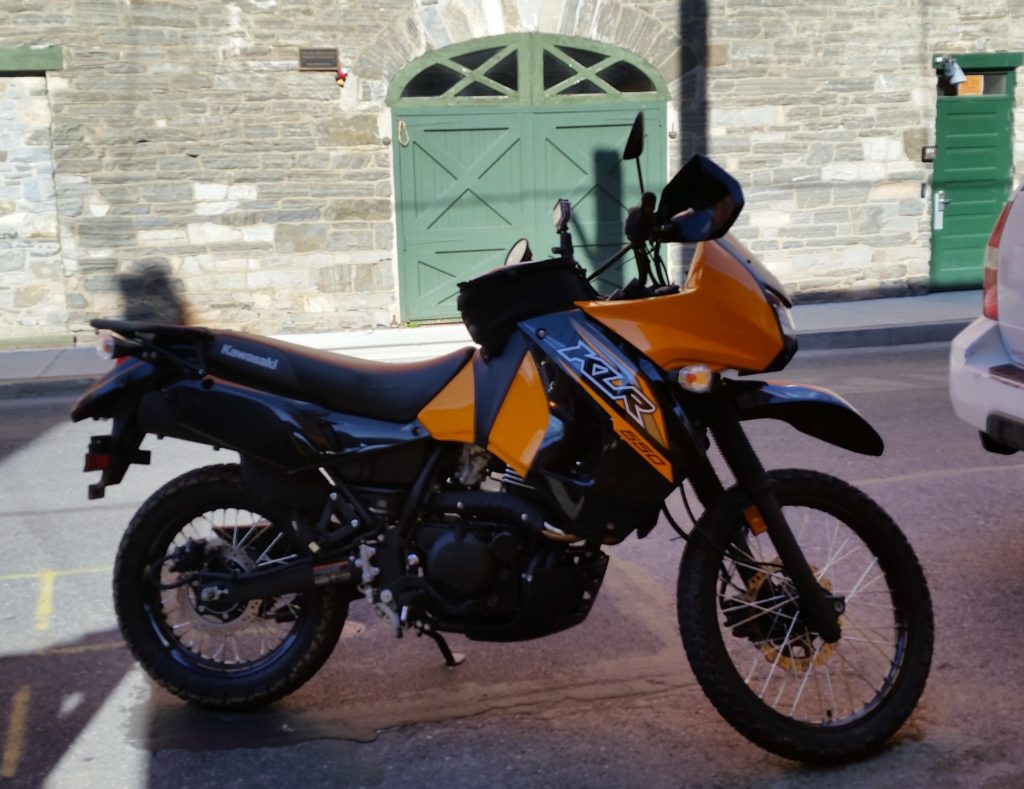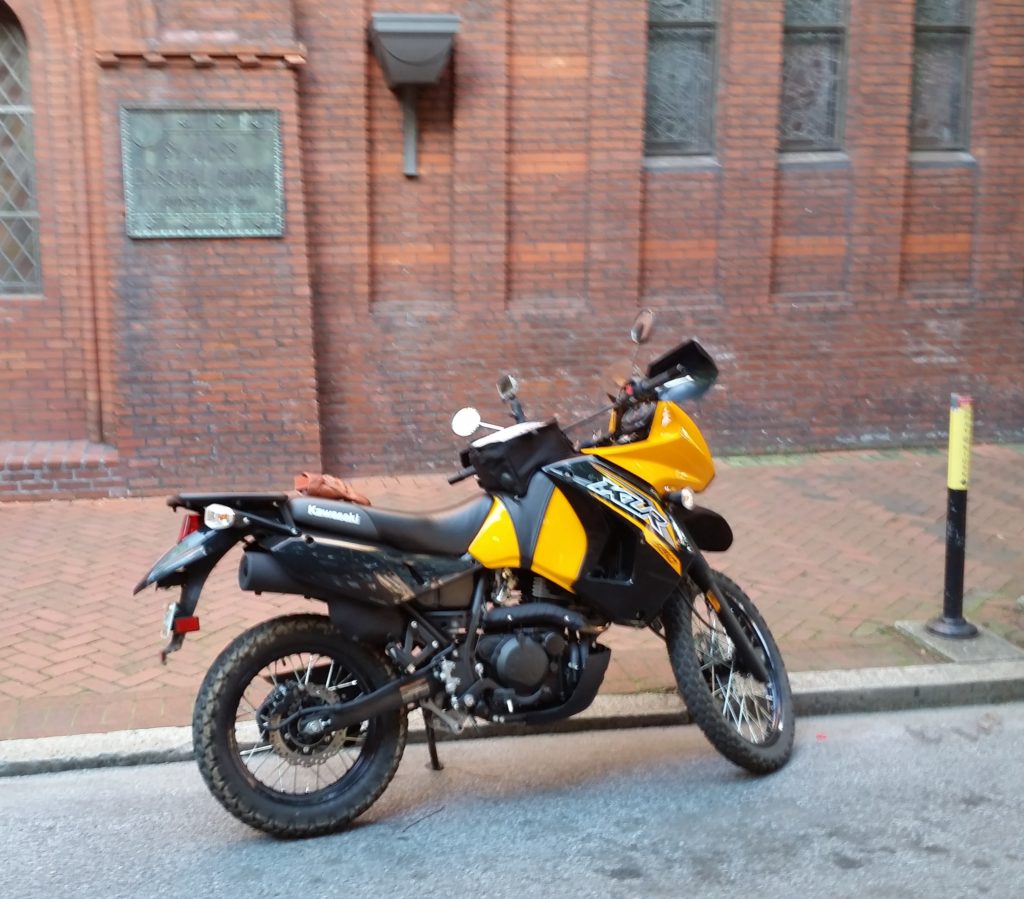Shadow Spirit and KiLleR Bee can take us to dark destinations, but not today. This dark destination lies where no motorcycle can go, in the depths of the human heart. That said, KiLleR Bee had logged 300 miles (on back roads – you can’t rev it over 4K during break in), trying to shed some light on this darkness with images and videos.
The First Church
We start with Paxton Presbyterian in Harrisburg, the first of our churches. Paxton Presbyterian bills itself as “the oldest Presbyterian church building in continuous use in Pennsylvania”. The current old building, erected in 1740, replaced a log structure from the previous decade.

The construction of this structure was overseen by John Elder, the so called, “fighting parson”, and their second pastor, installed in 1738. From his congregation John Elder organized the Paxton Rangers and he was their commander. Their purpose? To kill Native Americans, who were killing them because they were stealing their lands.
The Paxton Rangers, known as the Paxton Boys, launched several campaigns upriver on the Susquehanna. On the first foray north, Native Americans surprised them, killing four and wounding six. On the way home they happened across three Native Americans returning from trading in Bethlehem. The Paxton Boys shot and scalped them. The second expedition, this time to the Wyoming Valley, arrived too late. Returning empty handed, they needed a victory.
How about heading south along the Susquehanna, where the Conestogas lived near Safe Harbor in Lancaster county? Penn had signed a treaty with them in 1701. They were peaceable with no arms. They farmed and wove baskets. There were only twenty of them. They’d be easy pickings. And there were over fifty Paxton Boys.
After riding down from Paxton the night before, the Paxton Boys assembled at Wright’s Ferry (Columbia) on December 14, 1763. They followed the river south a few miles, then headed east toward the Conestoga’s Indian Town.
From River Road near the Susquehanna, KiLleR Bee traveled east on Indian Marker Road, in the same direction and probably close to the route of the Paxton Boys. As you crest the hill, there is the marker commemorating Indian Town.
The words on the Marker read:
The Conestoga Indians in origin largely the survivors of the defeated ancient Susquehannas or Minquas of Iroquoian stock located their village variously on these lands in the Penn Proprietary Manor of Conestoga chiefly west of this point. They were visited here in 1701 by William Penn who made treaties with them The tribe was exterminated by the Paxton Boys in 1763 Marked by The Pennsylvania Historical Commission and the Lancaster County Historical Society 1924

The Death of a Nation
When the Paxton Boys reached the town only 7 people were there: two men, two women, two children and old Sheehays, their leader. The rest were out peddling their wares among the neighboring farms. One of the boys escaped and ran to a neighboring farm, but the rest were murdered and scalped. The houses were looted and burned.
To protect the remaining Conestoga, the county authorities placed them in the newly constructed workhouse in the town of Lancaster, where the Fulton Theater currently sits. The back wall of the theater is all that remains of the workhouse.

The small plaque to the left of the door reads simply:
Site of Conestoga Indian Massacre December 27, 1763
Two days after Christmas the Paxton Boys returned to complete their grizzly mission. They stabled their horses at Slough’s White Swan Tavern, marched west on King Street, into the workhouse as the jailer stepped aside, and at 2 pm slaughtered all fourteen of the remaining Conestoga. Returning to the tavern, they mounted their horses, rode a victory lap around the courthouse, exulting in their bravery of killing fourteen unarmed people including seven children, then rode home to Paxton.
And so ended the nation of the Susquehannocks.
The Second Church
Where were all these dignitaries that brought the Conestoga into the town for their safety? They were attending a belated Christmas service at the Anglican church – St. James, about two blocks away from all the action. So they all had a good alibi. The Reverend Barton had started his service at 2 pm.

It was a limestone building, but now it’s brick. It was an Anglican church, but now it’s Episcopalian.
Shortly after this incident, a tract war erupted in Philadephia, some condemning, some defending, the Paxton Boys. Ben Franklin wrote a blistering pamphlet condemning them and ending with:
Cowards can handle Arms, can strike where they are sure to meet with no Return, can wound, mangle and murder; but it belongs to brave Men to spare, and to protect; for, as the Poet says, Mercy still sways the Brave.
The main defense of the Paxton Boys was written by an Anglican minister. who wrote:
A mighty Noise and Hubbub has been made about killing a few Indians.
Guess who that was. Yes, that was Barton. And guess who ended up becoming the Indian Town Manager for life and got to farm that fertile land? Yes, that, too, was Barton.
The City
Lancaster tried to protect the Conestoga, didn’t they? Well… Let’s take a look at a boring section of motorcycle action cam footage. KiLleR Bee will be traveling from the back wall of the Fulton Theater (where the workhouse was) south to King Street, turn east and proceed up to Penn Square where the Soldiers and Sailors Monument is, and the Marriot on the right. That’s where Slough’s White Swan Tavern used to be. And while you’re watching this footage, ask yourself, “If I robbed a bank would I park my getaway car this far away?” Unless I knew I wouldn’t be caught. Unless I knew nobody would care. Unless I knew they were all in on it.
Nobody ever identified any Paxton Boy involved in the raid. No charges ever were brought. No justice ever was served.
For a good book on this topic read Jack Brubaker, Massacre of the Conestogas